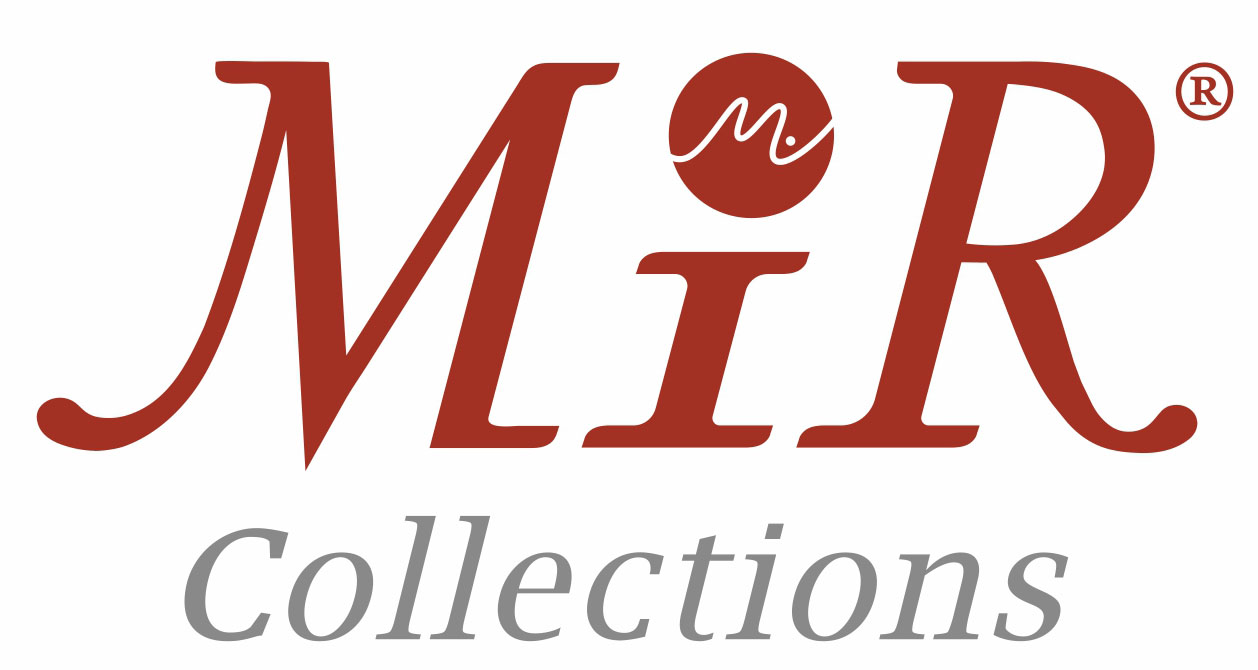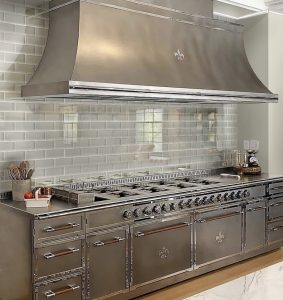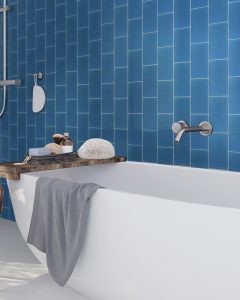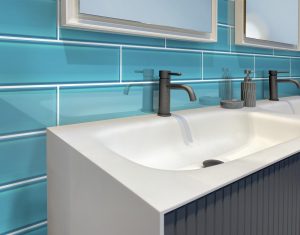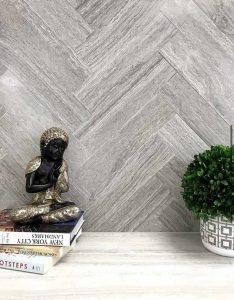Your Definitive Guide To Subway Tiles
Glass subway tiles (Sugar Cookie 3×6) create a light-reflective backsplash in this kitchen and complement the unique victorian inspired cabinetry and stove.
Subway tiles: The classic, elongated tiles have found their way into the most pristine interior designs within the last century and a quarter. They are known for their easy appearance, timeless aesthetic, cleanliness, and overall beauty. Since we have such appreciation for this tile classic, today we’re covering all things subway tile. In our subway tile guide, you’ll learn; what subway tiles are, how they become, the various subway tile materials available, the costs involved, and the different lay patterns. So scroll on and get subway tile smart today.
What are subway tiles?
This bathroom backsplash lights the way with a herringbone subway tile pattern made from glass tiles (Silver White 3×6). It’s chic and certifiably gorgeous!
We guarantee that if you didn’t know the name of these tiles, you’ve definitely seen (or even used) them before. They are the most classic, traditional tile formats and widely touted as a timeless option for tiling interiors: kitchen backsplashes or bathroom walls.
While we can explain, more abstractly, what subway tiles are, here’s the official definition of subway tiles: “A thin, low-fired, glazed ceramic tile.”
If you’re thinking, I’ve seen these tiles in so many forms before! You’re not alone. You’re correct! Over the years, thanks to tile-making advancements, subway tiles have come in a range of materials. This includes stone subway tiles, marble subway tiles, glass subway tiles, and porcelain subway tiles. Indeed, there’s something for everyone’s taste!
Radiant blue subway tiles (Color Palette) create a feature wall design behind this soaking tub in a contemporary guest bathroom. We love the bold blue hues and modernized vertically stacked subway lay pattern used here!
These timeless rectangle tiles are great for kitchen backsplash tiles; however, they work on bedroom walls, as shower wall tiles, or feature accent wall tiles in an upscale bathroom. In addition, the relatively flat surface and narrow grout lines make these tiles are a standard inconvenience. However, it doesn’t take much to keep up with tile cleaning, which is excellent in areas of high use as the kitchen or bathroom.
How did subway tiles become popular?
Buckle up, history buffs! We’re time traveling to educate you on how subway tiles became popular.
You may be surprised to learn that subway tiles were invented back in 1904 in New York City. Back then, the NYC planners were working on launching a series of—drum roll, please—subway stations around Manhattan. But, using some psychological insights, they were nervous that the subways, which reside underground, would be too dark and turn people off.
The gorgeous NYC subway tiles still stand today.
The city planners consulted two architects, Christopher Grant La Farge and George C. Heins, who invented the now-classic, white 3×6 subway tiles to counter this potential roadblock.
These tiles provided comfort in otherwise darkened spaces. With their white and glossy design, the first subway tiles formed a highly reflective surface that helped create a safe, sanitary feeling for passengers who may have had concerns about commuting underground. The result? Passengers felt safe and comfortable, and the underground spaces soon felt familiar to the citizens using the subway for the first time.
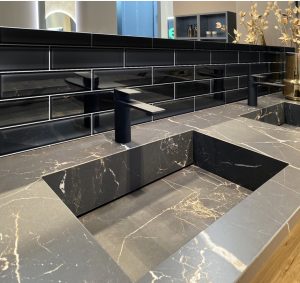
Definitive proof that black subway glass tiles are bold, impactful yet not overpowering. They create depth, dimension and demand attention without creating a dark ambiance.
Aside from their looks, these tiles proved easy to clean, which was a definite must-have for subway spaces. Moreover, they helped keep the subway stations polished and sanitary. With a low-maintenance body, these tiles soon became synonymous with being easy-to-clean, bacteria-resistant, and stain-resistant.
So, it’s with little wonder why the general public started designing subway tiles in residential interiors and commercial interiors.
What are subway tile lay patterns?
Subway tiles are versatile. There’s no denying that. Aside from the sheer ability to work within most spaces, these tiles also provide the ability to create a custom touch. Below we go over the most popular subway tile patterns and how to mimic them.
Classic
A Caribbean ocean blue subway glass tile creates a truly magnificent touch in this modern transitional powder room.
Likely to be the most noticed pattern listed, classic subway tile patterns are 50% offset. This means the middle of one tile aligns with the edges of the two tiles above or beneath it.
This beautiful pattern, timelessly chic, is excellent for patterned subway tiles or statement tiles since it provides a simple, non-overwhelming touch to design and lets the tile speak for itself.
In addition to the classic offset pattern, one-third offset and one-fourth offset patterns give a slight, updated, modern twist to the design.
Stacked
Dazzling this small kitchen are dark gray subway tiles laid in a contemporary-looking stacked pattern.
Turn things sideways and stack them up! The stacked subway tile lay pattern is essentially taking the class pattern and turning it on its side. You can create a stacked design horizontally or vertically. Both are chic.
The vertical subway tile pattern is a great way to elongate any backsplash or wall. In addition, it helps to draw the eye upward and mesmerize. The result is a more modern, cohesive interior design style that’s sure to wow.
Herringbone
The true beauty of stone subway tile is seen in the feature wall in this space. Using an etched marble subway tile in a herringbone pattern, the result is stylistic and profound.
Oh, herringbone, the fun pattern that’s more than beloved! The herringbone subway tile pattern adds a sense of movement to any application and can be laid at different angles to create other effects.
The pattern may be a bit more complicated than the above two, but trust us, it’s worth the effort! It involves diagonal cuts around outlets and the edges of your space, so you likely want to consult a professional installer for this one. They’ll be sure to make exact measurements and practice laying everything out before getting started. So you? You can admire the work for years to come.
Double Basket Weave
The double basket-weave layout offers a modern take on an old favorite when crafted from subway tiles! This beautiful lay pattern creates a striking wall tile design that adds dimension and visual interest to any space. Made from pairs of vertical tiles framed by horizontally laid tiles, this subway tile pattern is effortless.
What subway tile materials exist?
There is a multitude of subway tile materials available. From ceramic tile formats to recycled glass tile, the sheer variety makes this beautiful tile choice a go-to for almost any design.
Ceramic & Porcelain Subway Tiles
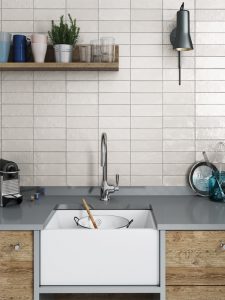
Nothing says unique as does a handmade zellige subway wall tile (Silk) adorned with rustic wood cabinetry.
Ceramic tile is the class-act of subway tiles. It was the OG that still coats the subway system of NYC to this day. They’re classically chic and magnificently low maintenance. Plus, they come in many colors, with bright and bold ceramic tiles trending into 2022.
On the other hand, porcelain tiles may look like ceramic tiles, but they are denser. This fundamental difference makes them more impervious to water, less likely to scratch or stain, and require even less maintenance than ceramic tiles. Plus, with printing advancements for porcelain tiles, you can get wood look subway tiles or stone look subway tiles for shower walls or kitchen backsplashes for less than the real thing (yet just as pretty!)
Glass Subway Tiles
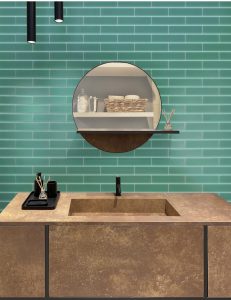
The use of the colorful subway glass tile creates a fun atmosphere and pleasant twist in a more organic decor scheme.
Glass subway tiles have become extremely popular in recent years. Thanks to its translucence, and light-bouncing properties, it creates an ethereal appearance in every room it is placed. Plus, its durability and easy-to-clean surface make it a go-to for children’s bathrooms, family kitchens, pools, and patio fireplace surround tile designs. Homeowners prefer the fun colors of glass tiles and their modern ambiance.
Marble Subway Tiles
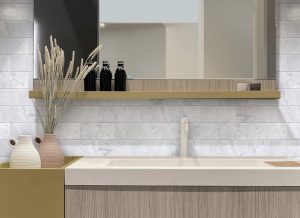
Beautiful and elegant, marble subway tile adds a certain joie-de-vivre to any space placed.
Marble is a stylish, sophisticated, and timeless material. This is taken to another level when used to craft gorgeous subway tiles that also are timeless. A myriad of marble variations give off vastly different moods inside an interior; these tile options include Nero Marquina, Carrara, Bleu Celeste, and Calcutta. The range of colors and finishes and the unique-to-a-cut appearance are what draws designers to these subway tile formats. Unfortunately, these materials will require more upkeep since marble is a natural material prone to staining.
Eco-Friendly Subway Tiles
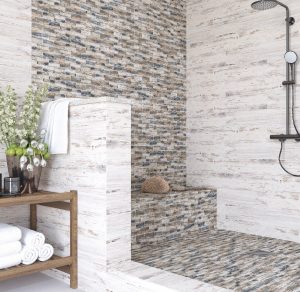
A beautiful recycled glass tile (Nantucket collection) creates a relaxed aesthetic in this bathroom. A true testament to how recycled glass tiles can enhance any space they are placed in.
For those that follow a sustainable lifestyle, recycled glass subway tiles are a great option to add to a design. Made from recycled bottles, these vibrant colorful tiles can make a splash in any space with their pure vibrancy. Plus, recycled glass tiles are just as durable as regular glass tiles, which makes them the perfect kitchen backsplashes, bathroom feature walls, and shower floors.
Choosing grout for subway tiles?
When it comes to choosing grout for subway tiles, there’s a spectrum of options at your disposal. While the number of shades can be overwhelming at first, there are a few key pointers to keep in mind that will help you navigate the decision:
If you want a traditional look, match the tile
For those that want the subway tile and grout to seamlessly work together, using a tone that is similar to the subway tile will allow for this. If you have a white subway tile, you can pair it with a matching white grout to create a sense of cohesion and fluid motion in the design. On the other hand, if you have a beige subway tile, you can choose a more natural grout color to complement the facade perfectly.
For those that want to use grout to highlight the natural shape of the subway tile, but not overpower it, try to use a shade just slightly darker than the color of the tile. A navy blue tile can work well with a beige tone grout to do just this.
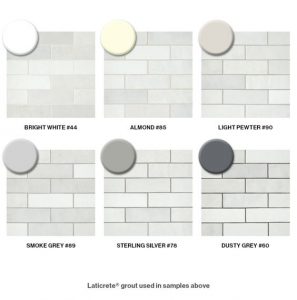
If you want high-impact, contrast the tile
Alternatively, if you’re more interested in a captivating, high-impact design, then your aim is to contrast the subway tile color with grout. If you have a white subway tile, you can pair it with a contrasting black grout to create a stark difference that’s immediately impactful and empowering. On the other hand, if you have a black subway tile, you can choose a white grout to really enhance the bold hue of the tile.
What subway tile sizes exist?
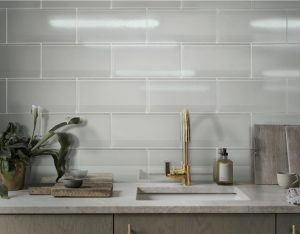
Beautiful 8×16 subway glass tiles in a modern home.
Subway tiles come in a number of different sizes, which is perfect since this allows them to be a flexible option for most designer’s projects. While the traditional format is a 3×6 subway tile, or rather, a 1:2 ratio between length and width, with advancements in the tile industry, you can now find large format subway tiles. With their easy-to-arrange bodies, it really comes down to knowing the lay pattern you have in mind to determine the right size to use.
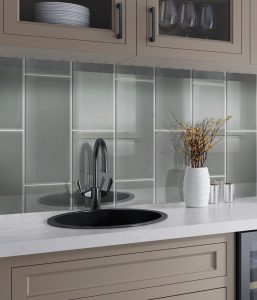
Gorgeous, reflective large format subway tiles stacked vertically as a backsplash.
As a quick reference, here’s a list of the subway tile sizes available today: 2×4, 2×8, 3×6, 3×12, 4×8, 4×12, and 6×12.

